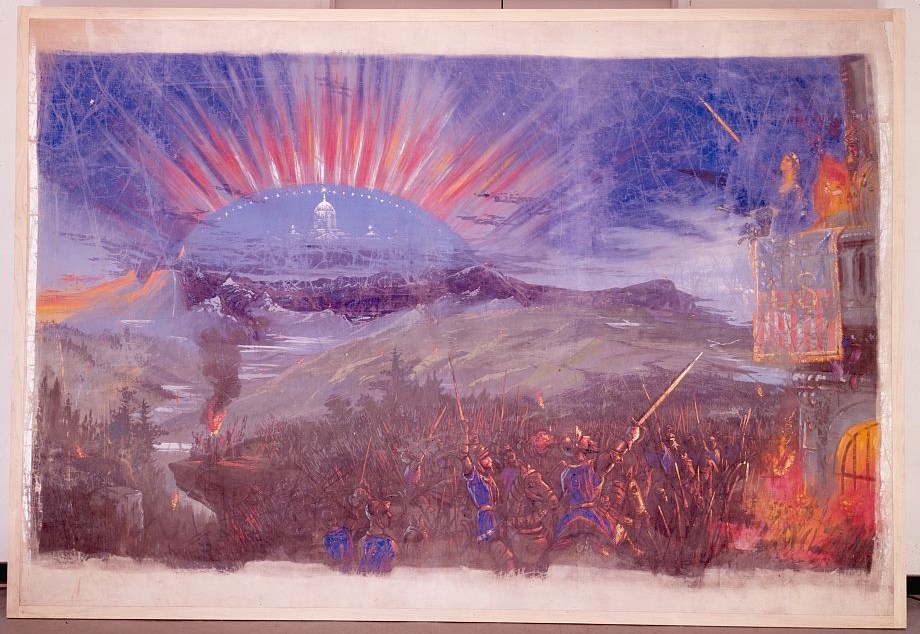with regional characteristics
Thanksgiving Day was celebrated 150 years ago today across the United State. The New-York Times thought that the observance was almost beyond the need for presidential or gubernatorial proclamations. Thanksgiving was becoming “a national holiday” anticipated by all the citizens and observed on the last Thursday in November by custom. The paper stated that the proclamations were no longer necessary but a welcome way to add dignity to the celebration. That’s a good thing because there sure seemed to be a lot of them. President Andrew Johnson’s proclamation agreed that the Thanksgiving custom “may now be regarded as established on national consent and approval” and thanked God that “He has inclined our hearts to turn away from domestic contentions and commotions consequent upon a distracting and desolating civil war, and to walk more and more in the ancient ways of loyalty, conciliation, and brotherly love.” State governors also got in the act. Here are a couple examples.
Colonel Joshua Chamberlain and his 20th Maine Regiment heroically and successfully defended Little Round Top on July 2, 1863 during the Battle of Gettysburg. As governor of Maine he proclaimed November 28, 1867 as a day of Thanksgiving.
__________________
Down in Georgia Governor Charles J. Jenkins was annoyed that Big Yankee was infiltrating and basically running the state but was thankful things weren’t worse.
From The New-York Times November 16, 1867:
Thanksgiving Proclamation by the Governor of Georgia.
It becomes all men, who individually recognize and adore the Supreme Ruler of the Universe, laying aside, at times, their several avocations, simultaneously to bow before His Throne – to render thanks for blessings shared by all, and to supplicate protection and advancement for interests common to all.
The people of Georgia have much to be thankful – and very much to pray for.
The destitution, unparalleled in their history, the result of protracted war, an abundant harvest has succeeded. Pestilence, which among neighboring peoples has slain its thousands, has been unknown within their borders. Subjected to a form of government not of their own choosing, nor congenial to their cherished love of liberty, and menaced with social disorder and popular commotion by the evil machinations of unofficial intruders and agitators, yet patiently awaiting the prevalence of better counsels, they find to-day that apprehended tumult and violence have thus far been averted by an unseen power, greater than that of all earthly agents and potentates.
These and many other blessings earnestly besought in the past, call for devoutly grateful acknowledgement of their present realization.
Whatever of physical, social or spiritual good they may properly desire, it is their privilege and their duty to implore at the mercy-seat of Omnipotence.
Therefore I, CHARLES J. JENKINS. Governor of the State of Georgia, do issue this my proclamation, appointing Thursday, the 28th day of November inst., as a day of public thanksgiving and prayer; and do earnestly invite my fellow-citizens, during its brief space, to close their places of business, and to open their sanctuaries – to lay aside their secular cares and engrossments, and to celebrate it by communion with God.
Given under my hand and seal of the Executive Department, at the Capitol in Milledgeville, this 8th day of November, A.D. 1867.
In Gotham the Times celebrated the commercial activity and hustle and bustle of the day before. Another custom – turkey seemed to be the default entrée of the feast. From The New-York Times November 28, 1867:
… THE DAY AT HOME.
Yesterday our crowded markets gave fearful promise of much feasting on the morrow. The manner in which turkeys were whisked off their hooks, or from the counters, and flung into the ready scale, was wonderful. No appreciable time seemed to have elapsed from the moment that you asked the price of this one until you found it in your possession or booked by the expressman. All the good things which accompany the whilom monarch of the feast – the fragrant, smoking, silent gobbler – changed hands with like celerity. Yesterday was Thanksgiving Day with all the poultrymen and with all the grocers. Many, very many purchased; few waited to bargain. The dealers shook the customers as if they were apple-trees and gathered in the fruit. But who will be the less happy if turkey costs an extra cent a pound? Nobody. He will be all the dearer to us! Johnny wouldn’t eat less pudding if turkeys could be had for nothing, nor would head-aches be fewer to-morrow if raisins were a dollar by the pound. Toy venders were as busy, too, as turkey venders, from dawn to late last night. Boys ran against you at every corner with big packages, evidently going somewhere, and in a hurry to get there. There was room in cars for about half their usual take-in of human stuffing – the rest of the space was choked with parcels – yey everybody bore good humoredly, in street and vehicle, their share of the crush and jam and collision.
No doubt the patience exercised in the market and in the street is to-day rewarded to the heart’s content of those who suffered. Happy faces round the boards, and God’s blessing on the feast, are meet reward for those who learn to “labor and to wait.”Let us hope that this bright presence will bless to-day the festival alike of rich and poor, filling all hearts with gratitude for the untold deliverances of the past, for present bounties, and for the hope implanted in our hearts that the children of an age, to whom this time will be remote in the history of the past, will still preserve the memories and the observances of Thanksgiving Day.

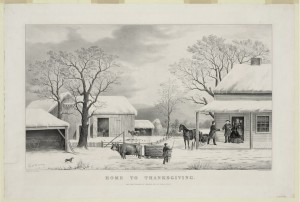
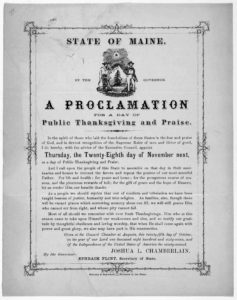
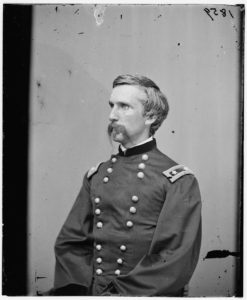
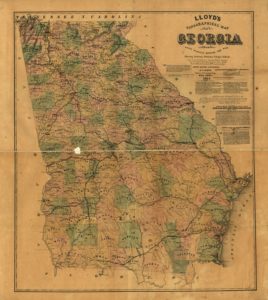
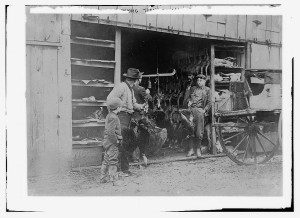
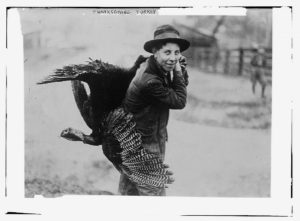
![The Crowded car [Pair of horses unable to pull overcrowded street car in New York City] (Illus. in: Harper's Weekly, v. 16, (1872 September 21), p. 741.; LOC: https://www.loc.gov/item/99614207/)](https://www.bluegrayreview.com/wp-content/uploads/2017/11/3b10666r.jpg)
